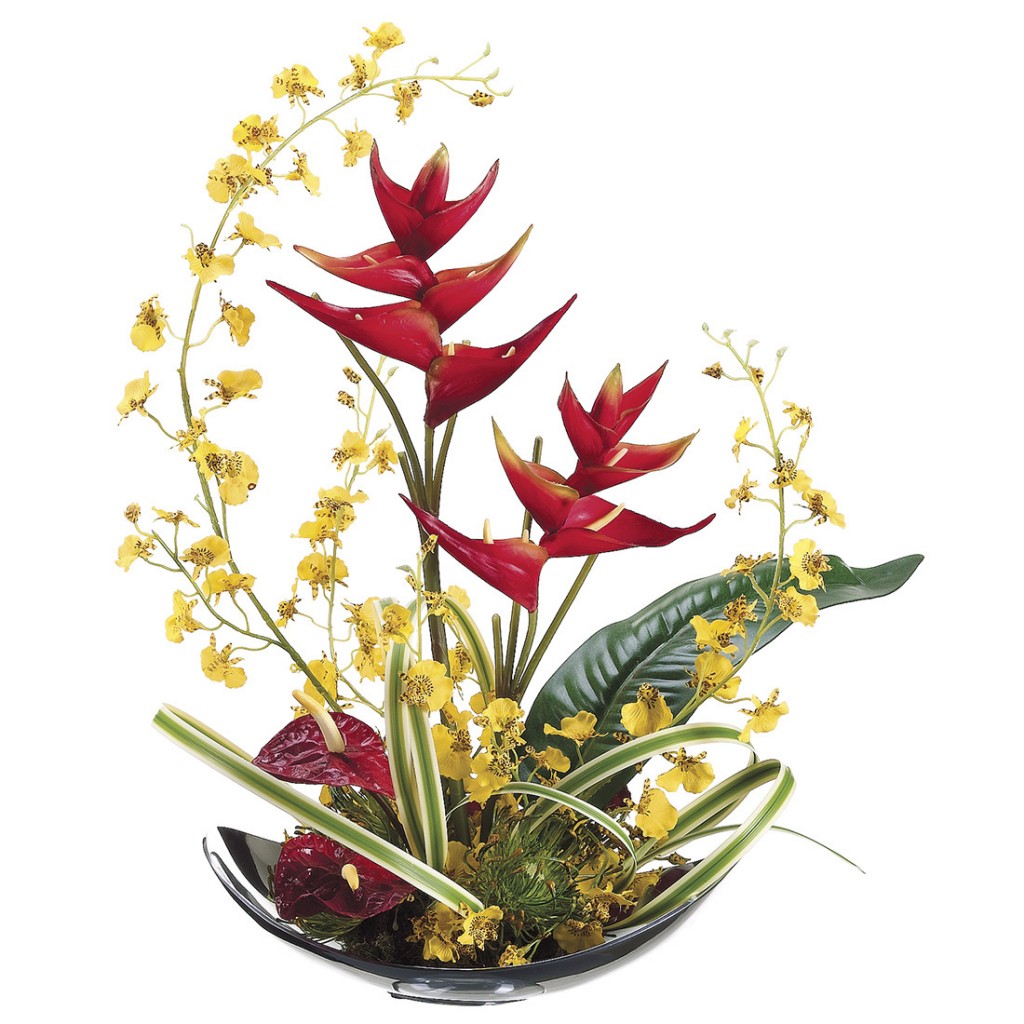Ikebana is an ancient form of flower arranging dating back to the 15th century. Once taught only to the upper class Japanese aristocrats and monks, today over 15 million people practice the art. Although this style is thousands of years old, ikebana flower arrangements are valued today for their simplicity and modern flair.
Styles of Ikebana
There are several styles of Ikebana arranging. The Rikka style consists of a vertical arrangement with 7 stems representing elements of nature such as hills and waterfalls. Shoka arrangements are more modern in appearance and consist of three stems of flowers representing heaven, earth, and man. Piled flowers in a shallow container are referred to as Ohara, and a free-form style called Jiyuku is less structured.
Characteristics
People skilled in the art of Ikebana flower arranging design their creations in silence so they can focus on the appreciation of nature. Most arrangements are asymmetrical and emphasize the use of all parts of the plant – flower, stem, leaf, and root. Many are carefully cut and arranged to form a triangular shape while others are freeform and unstructured.
Today Ikebana arrangements are appreciated for their simplicity and drama and are a nice addition to an entry table or centerpiece.
About Philip Travers
Twitter •



 WishLists
WishLists
 My Account
My Account






